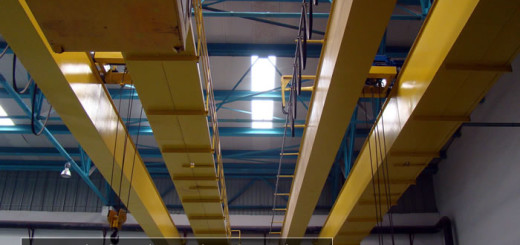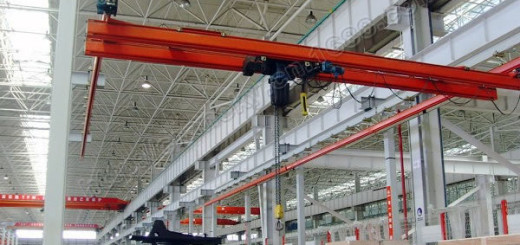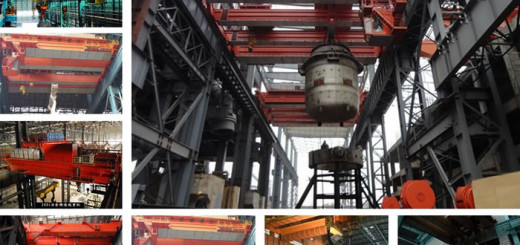Overhead crane safety tips for professionals, overhead crane design engineer and operators
Overhead crane as heavy-duty machinery has very strict safety requirements. There are many types of overhead cranes, all of which can pose hazards if they are not used properly and with adequate safety precautions. Therefore the professionals should adhere to strict guidelines and safety regulations are published by OSHA and overhead crane safety tips for professionals are summarized.
Some of OSHA’s laws on crane design and manufacture govern the following things
- Uniform crane control design and manufacture
- Trolley and bridge bumper design
- Stairway and ladder design
- Trolley and bridge brakes
- Design and manufacture of electrical components
- Hoisting equipment design and manufacture
Overhead crane safety tips for professionals are as following
Crane and Hoist Safety Design Requirements
Following are the design requirements for cranes and hoists and their components:
The design of all commercial cranes and hoists shall comply with the requirements of ASME/ANSI B30 standards and Crane Manufacturer’s Association of America standards (CMAA-70 and CMAA-74). Fabricated lifting equipment shall comply with the requirements in Chapter 2.2 (Lifting Equipment) of Mechanical Engineering Design Safety Standards (latest edition).
All crane and hoist hooks shall have safety latches.
Hooks shall not be painted (or re-painted) if the paint previously applied by the manufacturer is worn.
Crane pendants shall have an electrical disconnect switch or button to open the main-line control circuit.
Cranes and hoists shall have a main electrical disconnect switch. This switch shall be in a separate box that is labeled with lockout capability.
Crane bridges and hoist monorails shall be labeled on both sides with the maximum capacity.
Each hoist-hook block shall be labeled with the maximum hook capacity.
Directional signs indicating N-W-S-E shall be displayed on the bridge underside, and a corresponding directional label shall be placed on the pendant.
A device such as an upper-limit switch or slip clutch shall be installed on all building cranes and hoists. A lower-limit switch may be required when there is insufficient hoist rope on the drum to reach the lowest point.
All cab and remotely operated bridge cranes shall have a motion alarm to signal bridge movement.
All newly installed cranes and hoists, or those that have been extensively repaired or rebuilt structurally, shall be load tested at 125% capacity prior to being placed into service.
If an overload device is installed, a load test to the adjusted setting is required.
Personnel baskets and platforms suspended from any crane shall be designed in accordance with the specifications in 29 CFR 1926.550(g).
Operators shall comply with the following rules while operating the cranes and hoists:
Do not engage in any practice that will divert your attention while operating the crane.
Respond to signals only from the person who is directing the lift, or any appointed signal person. Obey a stop signal at all times, no matter who gives it.
Do not move a load over people. People shall not be placed in jeopardy by being under a suspended load. Also, do not work under a suspended load unless the load is supported by blocks, jacks, or a solid footing that will safely support the entire weight. Have a crane or hoist operator remain at the controls or lock open and tag the main electrical disconnect switch.
Ensure that the rated load capacity of a crane’s bridge, individual hoist, or any sling or fitting is not exceeded. Know the weight of the object being lifted or use a dynamometer or load cell to determine the weight.
Check that all controls are in the OFF position before closing the main-line disconnect switch.
If spring-loaded reels are provided to lift pendants clear off the work area, ease the pendant up into the stop to prevent damaging the wire.
Avoid side pulls. These can cause the hoist rope to slip out of the drum groove, damaging the rope or destabilizing the crane or hoist.
To prevent shock loading, avoid sudden stops or starts. Shock loading can occur when a suspended load is accelerated or decelerated, and can overload the crane or hoist. When completing an upward or downward motion, ease the load slowly to a stop.
Safe Operating Requirements
All workers who use any crane or hoist shall have an operator’s license. The company issues licenses for authorized employees who have been specifically trained in crane and hoist operations and equipment safety.
Crane and Hoist Operators
To be qualified as a Crane and Hoist Operator, the candidate shall have received hands-on training from a licensed, qualified crane and hoist operator designated by the candidate’s supervisor. Upon successful completion of training, the licensed crane and hoist operator and the candidate’s supervisor will fill out and sign the Qualification Request Form and Crane Safety Checklist and send them to the Safety Office for approval. The candidate will be issued a license upon approval by the Safety Manager. Crane and Hoist Operators must renew their license every three years by satisfying the requirements described above.
Overhead crane safety tips for professionals especially design engineers and operators are guarantee of security. All works should comply with them and always remember: “Safety First”.




